Practice Notes The influence of functional parts when determining design similarity
When determining the similarity of designs, how is the court’s judgement affected when a design element has commonality with a functional element? A recent Supreme Court decision allows some insight into this question.
Existing Precedent
The determination of whether designs are similar should be judged not by separating and contrasting the individual elements, but instead in accordance with the aesthetic sensibilities of a viewer observing and contrasting the designs as a whole. However, in the case that the common parts of both designs are an intrinsic part of the product, or a basic/functional form of the design, such parts should be given low importance and the compared designs cannot immediately be deemed identical or similar based only on the identity/similarity of such parts. (Supreme Court Decision 2003Hu1666; October 14, 2005.)
Decision 2016Hu1710
Per existing precedent, in Decision 2016Hu1710 (September 3, 2020), a case relating to cargo vehicle toolbox designs, the Supreme Court ruled that in the case that the common parts of both designs are an intrinsic part of the product, or a basic/functional form of the design, such parts should be given low importance. However, the court additionally ruled that if it is possible to select an alternative form which can secure the function of the product (see Fig. 3 below), such form is not essential in securing the function of the product and is instead simply related to the function, and so such part should not be given low importance when determining the similarity of designs just because it is related to the function.
|
|
|
|---|---|
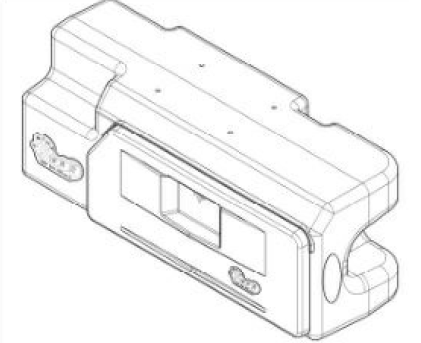 |
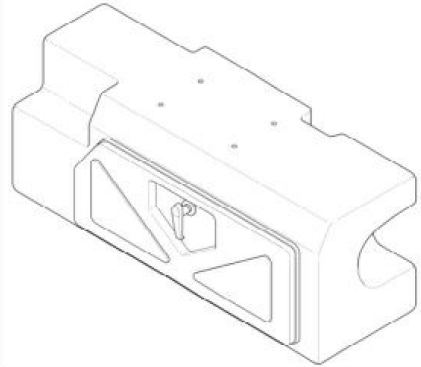 |
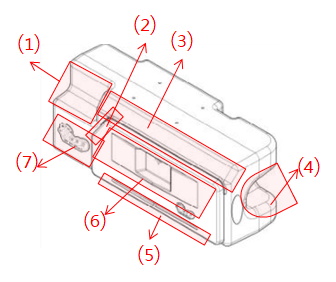 |
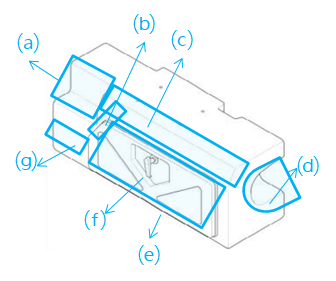 |
In this case specifically, the court stated that the registered design in question and the preceding design have the following in common:
- The rectangular incision groove formed in the upper left corner of the body (Fig. 1 [1]; Fig. 2 [a]).
- The upper left part of the hinged door formed in the front of the body is cut at a 45º angle (Fig. 1 [2]; Fig. 2 [b]).
- A long inclined surface about the width of the hinged door is formed on the upper part of the body located at the top of the hinged door (Fig. 1 [3]; Fig. 2 [c]).
- A hemispherical concave groove is formed obliquely at the rear center of the right side of the body (Fig. 1 [4]; Fig. 2 [d]).
The court stated that the parts in common were not seen as being essential in securing the function of the cargo vehicle toolbox, and in commerce, it is expected that consumers would consider the aesthetics of the designs as a whole, including the features of the above parts in common. Accordingly, such parts should not be given low importance when determining the similarity of the designs just because they are related to the function, or are not visible after installation, and the similarity of the designs should be judged in accordance with the aesthetic sensibility felt when observing the designs as a whole, including such common parts.
The court went on to rule that while the registered design in question and the preceding design differ in respect of the following, when observed as a whole, the designs are aesthetically similar and thus are regarded as being similar designs:
- The narrow band protruding at the lower part of the concave elevation (Fig. 1 [5]) vs. no such protruding band (Fig. 2 [e]).
- The rectangular concave surface formed in a horizontally long rectangle on the front of the hinged door (Fig. 1 [6]) vs. the concave elevation being pentagonal, with triangular shapes protruding symmetrically on both sides of the concave elevation (Fig. 2 [f]).
- The palm-of-the-hand-shaped figure and ‘5000’ text expressed on the left side of the body and the lower right side of the hinged door (Fig. 1 [7]) vs. no such parts (Fig. 2 [g]).
Take-aways
Looking at this precedent, we may understand that the registered design in question is not strictly necessary to secure the function, and rather, as there exists a selectable alternative form (e.g. the known design shown in Fig. 3), the registered design in question is not seen as being essential in securing the function of the cargo vehicle toolbox, and so should not be given low importance when determining the similarity between designs.
|
|
|---|
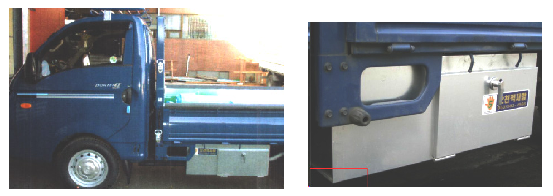 |
In principle, if the common part of designs being compared is a basic or functional form of the product that has been widely used before the filing date of either design in the field to which the designs belong, the court should give low importance to such part when determining similarity. However, if the common part is not essential in securing the function of the product, when determining similarity between designs, the designs should be considered as a whole, including such part.
Therefore, if there is commonality between a to-be-applied-for design and an existing design, where such common part is a basic or functional form of the product that has been widely used in the field to which the designs belong, it is necessary to consider (i) whether the designs differ except for such part, and (ii) if the common part is not essential, whether the to-be-applied-for design as a whole, including such part, offers a different aesthetic sensibility to the existing design.
Written by Jae-sang LIM